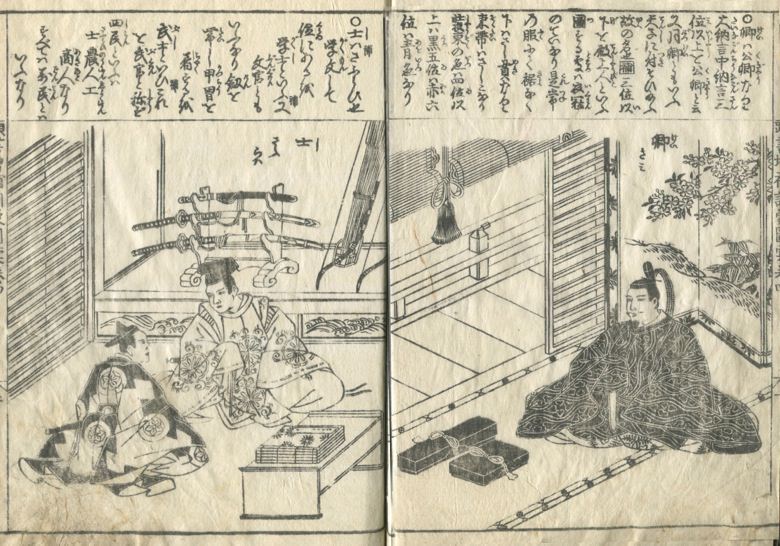“The court noble (Kugyou)” is drawn on the right.
It is described in the text that Dainagon, Chyuunagon, and the third more than place are called court noble.
Moreover, it is also called “月卿 (Gekkei).”
It is said that it is the way of calling which receives 天子 (Tenshi).
In addition, it is said that the third less than place calls it 殿上人(Tenjyoubito).
Although the full court dress is worn to the Imperial Court and agitation, the fourth more than place, black and the fifth place are red and the color of dress of the sixth place is blue.
“士 (samurai)” is drawn on the left.
Here, seemingly a university graduate, a civil servant, etc. will call it “Samurai”, and call a military officer a “Samurai.”
The text is also describing the status of the four social classes: worriors, farmers, craftsmen, and merchants for a few.
With the picture, the bow and the sword are drawn on the back and the book has set in the lower right.
If a person’s spatial relationship is reflected, the back may be a university graduate for a samurai.
右には「公卿(くぎょう)」が描かれています。本文には、大納言、中納言、三位以上を公卿というと記されています。また、「月卿(げっけい)」とも呼ばれます。天子に対する呼び方だそうです。なお、三位以下は殿上人(てんじょうじん)と呼ぶそうです。公家と動揺に束帯を着ていますが、服の色は四位以上は黒、五位は赤、六位は青色です。
左には「士(さむらい)」が描かれています。ここでは、学士や文官なども「士」というそうで、武官を「武士(ぶし)」と呼びます。本文では士農工商の身分にもすこし触れています。絵では奥に弓や刀が描かれており、右下には書物がおかれています。人物の位置関係を反映しているならば、奥が武士で手前が学士かもしれません。

